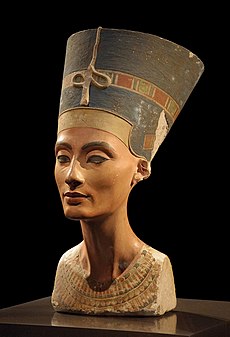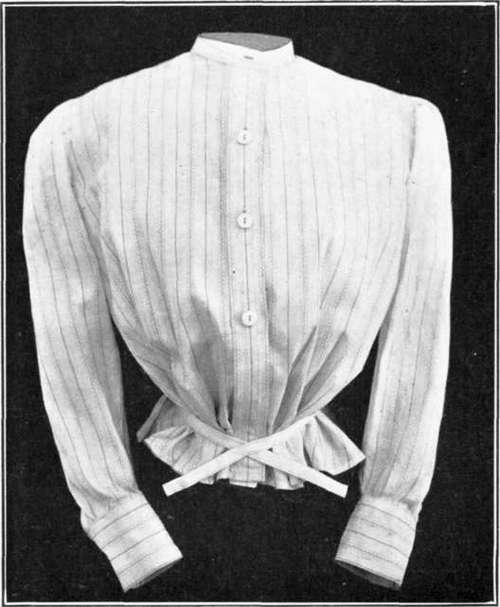
Nothing is fair in love and war…
Europe’s elite have gathered at the glittering Congress of Vienna—princes, ambassadors, the Russian tsar—all negotiating the fate of the Continent by day and pursuing pleasure by night. Until Princess Tatiana, the most beautiful and talked about woman in Vienna, is found murdered during an ill-timed rendezvous with three of her most powerful conquests…
Suzanne Rannoch has tried to ignore rumors that her new husband, Malcolm, has also been tempted by Tatiana. As a protégé of France’s Prince Talleyrand and attaché for Britain’s Lord Castlereagh, Malcolm sets out to investigate the murder and must enlist Suzanne’s special skills and knowledge if he is to succeed. As a complex dance between husband and wife in the search for the truth ensues, no one’s secrets are safe, and the future of Europe may hang in the balance…
” Shimmers like the finest salons in Vienna…a perfect blend of history, mystery, romance, and suspense." - Deborah Crombie
“Meticulous, delightful, and full of surprises." - Tasha Alexander
“Glittering balls, deadly intrigue, sexual scandals. . .the next best thing to actually being there!” - Lauren Willig
“Absolutely gripping. . .historical intrigue at its finest." - Deanna Raybourn
“Murder, deception, and romance, drenched in a richly detailed portrait of early nineteenth century Vienna." - C.S. Harris
What sparked this book? Was it a character? An historical event? A scene you just couldn't get out of your head?
I’ve been fascinated by the Congress of Vienna ever since I first read about it in Georgette Heyer’s The Grand Sophy when I was ten. Sophy and her father have been at the Congress and the tidbits mentioned about it are very intriguing. A wonderful lecture about the Congress my freshman year at Stanford further caught my interest. It was such an exciting time. After Napoleon was exiled to Elba, representatives of countries across Europe gathered in Vienna to redraw the Continental map. There was a great deal of intriguing, both political and romantic. In the autumn of 1814, the Congress of Vienna was the place to be. Imagine a combination of a modern international political conference and the Cannes Film Festival. Some claimed the delegates spent as much time waltzing as negotiating. The Festivals Committee, appointed by Austrian Emperor Francis I, felt it their duty to keep the foreign delegations entertained with events each more lavish than the last. There were masquerade balls, balloon ascensions, sleigh rides, a re-creation of a medieval tournament, nights at the theatre and the opera. I used the Congress as part of Charles and Mélanie’s backstory in Secrets of a Lady and Beneath a Silent Moon. I even referred to them investigating a murder there. I found myself really wanting to dramatize those events. There’s a vogue now for including more real historical people in historical fiction, and the Congress seemed the perfect opportunity to write a novel of intrigue that combined real and fictional historical people and events.
How does Vienna Waltz fit in with your Charles and Mélanie Fraser books?
Vienna Waltz is essentially the story of Charles and Mel’s adventures at the Congress of Vienna. Their time at the Congress is referred to Secrets of a Lady and Beneath a Silent Moon as I mention above. But my new publisher wanted new names, so they are called Malcolm and Suzanne Rannoch. However, I wrote the book using their “real” names to I could keep the characters and chronology consistent, and I think readers will recognize that they are very much the same characters. I like to think that Charles and Mel lead such adventurous lives it’s no wonder some of their adventures are chronicled under aliases :-).
Why are you Teresa Grant for Vienna Waltz?
Kensington wanted me to have a more historical sounding name. I chose Teresa, because Tracy can be a nickname for it, so I can still be Tracy online and interact with readers as Tracy. I’m still the same person, and I still write the same books.
Did you have to do any major research for his book? Did you stumble across anything really interesting that you didn't already know?
interesting that you didn't already know?
Definitely. I know the era, but I’d never written a book set in Vienna. I’m used to most of my primary sources being in English. I don’t read German or Russian or Polish. Fortunately I do read French, and a lot of the diplomatic correspondence from the period is in French, but I also ended up reading a lot in translation. I delved into the events of the Congress, from the maneuvering around Saxony and Poland to the lavish parties such as the Carrousel, a re-creation of a medieval tournament (which turns unexpectedly violent in my fictional retelling) and a Beethoven concert which is the scene of the book’s denouement (and a--fictional--assassination attempt).
I also got to know the real people who were important players at the Congress and who are major characters in Vienna Waltz. French foreign minister Prince Talleyrand, who supported the French Revolution, left France during the Reign of Terror, returned to France during the Directoire, became Napoleon Bonaparte’s foreign minister, and survived Napoleon’s downfall to represent the restored royalist government at the Congress, where he adroitly managed to maneuver himself into the heart of the negotiations despite France being the defeated power. His beautiful young niece-by-marriage, Dorothée, who he brought to the Congress as his hostess and fell in love with, despite being thirty-nine years her senior (and despite the fact that her mother had recently been his mistress). Lovely, unhappy Tsarina Elisabeth of Russia who at the Congress found herself reunited with Adam Czartoryski, the charismatic Polish patriot who was probably the love of her life (and had also been her husband’s best friend). Her husband, Tsar Alexander, and the Austrian foreign minister, Prince Metternich, who were fierce rivals at the negotiating table and were entangled with two of the same women, Princess Catherine Bagration (“the naked angel”) and the brilliant Wilhelmine, Duchess of Sagan (Dorothée’s sister). Mysteries always involve past secrets. In Vienna Waltz I was able to weave some real life secret scandals into the plot.

What did you find most challenging in writing Vienna Waltz?
Weaving together real and fictional people and events. This is the first time I’ve had real historical people as such major characters in one of my books. It’s a bit intimidating putting fictional words into the mouth of a real person and involving them in fictional events. Lauren and I talked about this a year ago when I was writing Vienna Waltz and she was writing The Orchid Affair (that’s us in New York more recently talking Napoleonic spies). I struggled with what it was fair to have a real person do, a particularly complicated question in a novel of intrigue. I spent a long time debating how far I could have Talleyrand go in his involvement in my fictional intrigues. But as Talleyrand was a master intriguer, I decided I could go pretty far with him in the book.
Then there the challenge of interweaving events. As I mention above, Catherine Bagration and Wilhelmine of Sagan were rivals in society at the Congress and were both involved with Tsar Alexander and Prince Metternich. I invented a third, fictional woman, Princess Tatiana Kirsanova, who is also involved with both Metternich and the tsar, who is found murdered on the night she has summoned Metternich, Tsar Alexander, the hero, Malcolm Rannoch (who is possibly her lover) and his wife, Suzanne, to her rooms, all at the same time. Not only did I have to weave the events of the book through the events at the Congress, I had to interweave Tatiana’s backstory with the histories of Metternich and Tsar Alexander and others whose path she crosses. I also had to weave events involving Malcolm and Suzanne's years in Spain and Portugal during the Peninsular War with the historical record.
Anything you flat-out altered or “fudged”? If so, why?
The timeline. It’s difficult to stretch a murder investigation out over too many days. I compressed real events slightly, so I could make the Carrousel the midpoint of the book and center the denouement round the Beethoven concert. I also enhanced Dorothée’s role in orchestrating the Carrousel and had Suzanne working with her. And I gave two of the real men who performed at the Carrousel fictional cases of the mumps so Malcolm and his friend Fitz could take their places.
Any gaffs or mea culpas you want to fess up to before readers get their hands on the book? I know I always seem to find one after the book has gone to press. *sigh*
Ditto. There was a glass instrument called a harmonium in the drawing room of the British delegation’s lodgings in the Minoritenplatz. It had a pedal and somehow I got it into my head it had keys like a piano as well. Only to learn otherwise from a (very kind) reader. Yet another reason to hope for a second edition—so I can correct it. I even have the young Schubert, who is also a character in the book, play the harmonium. Which he can still do—but without referring to keys.
Tell us a little about your hero. Something fun, like his favorite childhood pet, or his first kiss.
Malcolm Rannoch/Charles Fraser is deceptively reserved. He tends to duck out of large entertainments and hide out in the library with a book. (Fortunately for his diplomatic career he has a very socially adept wife). He also plays the piano and has a habit of quoting Shakespeare (he played Prince Hal in Henry IV Part I when he was at Oxford). And being good at code breaking runs in his family, which comes in particularly handy in Vienna Waltz.
What are you planning to work on next?
I just turned the next book in the series in to my editor. It’s a sequel to Vienna Waltz set in June 1815. Napoleon has escaped from Elba and returned to power in France. Malcolm and Suzanne have gone to Brussels with the Duke of Wellington as the allies prepare to fight the French. The book begins a few days before the battle of Waterloo, with Malcolm going to a rendezvous with an agent which turns into an ambush. A decorous young British wife is killed accidentally in the crossfire. Or perhaps, Malcolm and Suzanne discover as they investigate, it wasn’t so accidental. The last part of the book goes back and forth between the battle itself (where Malcolm is pressed into carrying messages) and Brussels where Suzanne is nursing the wounded. Writing the sequences at the Duchess of Richmond’s ball (which was interrupted by the news that Napoleon was on the march) and the battle itself was both exciting and challenging because they're such iconic historical events.
I’m now starting a third book in the series, set in Paris after Waterloo during the White Terror, when the Ultra Royalists turned on Bonapartists.
And I’ve just released The Mask of Night, which is set in 1820, just after Secrets of a Lady, as a Kindle e-book.





























